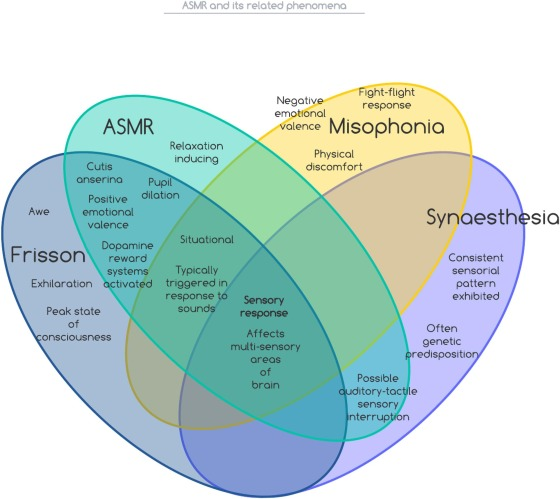The Science Behind ASMR: Understanding the Phenomenon
- Niko Beatz
- Feb 28, 2024
- 2 min read
Autonomous Sensory Meridian Response (ASMR) has captivated millions worldwide, offering a unique sensory experience characterized by tingling sensations, often accompanied by feelings of relaxation and euphoria. This article delves into the intricate neural pathways involved in ASMR, shedding light on its physiological and psychological underpinnings.
Intricate Neural Pathways:
ASMR triggers activate various regions of the brain, including the limbic system, which is responsible for emotional processing and memory formation. Studies utilizing neuroimaging techniques such as functional magnetic resonance imaging (fMRI) have demonstrated increased activity in the amygdala and hippocampus during ASMR experiences, suggesting a connection to emotional arousal and memory consolidation.
Neurotransmitters like dopamine and oxytocin also play a crucial role in the ASMR response. Dopamine, known for its involvement in reward processing, may contribute to the pleasurable sensations associated with ASMR, while oxytocin, often referred to as the "love hormone," enhances feelings of connection and intimacy during ASMR interactions.
Individual Differences in Sensory Processing and Personality Traits:
Research indicates that individual variations in sensory processing sensitivity (SPS) influence an individual's susceptibility to ASMR triggers. Those with higher SPS tend to be more responsive to subtle sensory stimuli, making them more likely to experience ASMR. Additionally, personality traits such as openness to experience and trait empathy have been linked to ASMR sensitivity, with individuals high in these traits showing greater receptivity to ASMR stimuli.
Comprehensive Overview of Peer-Reviewed Studies:
A wealth of peer-reviewed research has investigated various aspects of ASMR, ranging from neuroimaging studies to physiological measurements and qualitative research on subjective experiences. Neuroimaging studies have identified brain regions activated during ASMR, providing insights into the neural correlates of the phenomenon. Physiological measurements, including heart rate variability (HRV) and skin conductance response (SCR), have helped quantify autonomic and emotional arousal during ASMR experiences. Qualitative research has explored the subjective experiences of individuals who experience ASMR, highlighting its diverse effects on mood, relaxation, and well-being.
Ongoing Research Efforts:
Despite significant progress, much remains to be discovered about the underlying mechanisms of ASMR and its therapeutic potential. Ongoing research efforts aim to unravel the intricacies of ASMR, including its applications in treating anxiety disorders, depression, and chronic pain. By continuing to explore the science behind ASMR, researchers hope to unlock its full potential as a tool for promoting mental health and well-being.
In conclusion, ASMR represents a fascinating intersection of neuroscience, psychology, and sensory experience. By understanding the science behind ASMR, we can gain valuable insights into its effects on the brain and body, paving the way for new therapeutic interventions and enhancing our appreciation of this unique phenomenon.







Comments